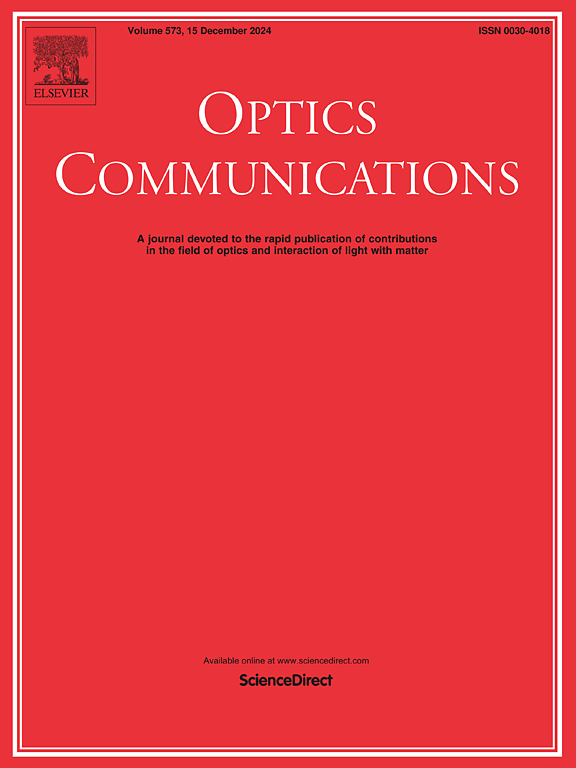Low complexity and receiver IQ skew tolerant timing recovery and equalization scheme under baud-rate sampling short-reach coherent optical interconnection
IF 2.2
3区 物理与天体物理
Q2 OPTICS
引用次数: 0
Abstract
Coherent detection with high spectrum and oversampled digital signal processing (DSP) has been widely used in long-haul and metro optical communication, and power consumption is one of the most challenge for its application in energy-sensitive short reach optical connections, such as hyper-scale and ultra-capacity datacenter net works. With negligible chromatic dispersion (CD) and polarization mode dispersion (PMD) in short-reach interconnects, a low complexity and robust timing recovery and equalization scheme with baud-rate sampling is proposed and demonstrated experimentally, which aims to achieve a power efficient DSP. Instead of oversampled DSP with fully-connected butterfly equalization structure, baud-rate sampling DSP with one-tap connected butterfly structure must become the most power-efficient solution for short-reach optical interconnects, because spectrum aliasing and convolutional polarization mixing caused by CD and PMD can be ignored. Compared to conventional baud-rate and oversampled DSP scheme, the experimental results further confirm the advantage of the proposed scheme in BER performance and IQ skew tolerance. Additionally, the proposed scheme with baud-rate sampling and a simplified equalization structure can also save around 75% of power consumption with a negligible performance cost, compared to oversample DSP scheme.
波特率采样短程相干光互联下的低复杂度和接收器 IQ 偏移容错定时恢复和均衡方案
采用高频谱和过采样数字信号处理(DSP)的相干检测已广泛应用于长途和城域光通信,而功耗是其应用于超大规模和超大容量数据中心网络等对能量敏感的短距离光连接所面临的最大挑战之一。在短距离互连中色度色散(CD)和偏振模色散(PMD)可忽略不计的情况下,提出了一种低复杂度、稳健的时序恢复和均衡方案,并通过波特率采样进行了实验演示,旨在实现高能效的 DSP。与采用全连接蝶形均衡结构的过采样 DSP 相比,采用单抽头连接蝶形结构的波特率采样 DSP 必将成为短距离光互连中最节能的解决方案,因为它可以忽略 CD 和 PMD 引起的频谱混叠和卷积偏振混合。与传统的波特率和过采样 DSP 方案相比,实验结果进一步证实了拟议方案在误码率性能和 IQ 偏移容限方面的优势。此外,与过采样 DSP 方案相比,采用波特率采样和简化均衡结构的拟议方案还能节省约 75% 的功耗,性能成本几乎可以忽略不计。
本文章由计算机程序翻译,如有差异,请以英文原文为准。
求助全文
约1分钟内获得全文
求助全文
来源期刊

Optics Communications
物理-光学
CiteScore
5.10
自引率
8.30%
发文量
681
审稿时长
38 days
期刊介绍:
Optics Communications invites original and timely contributions containing new results in various fields of optics and photonics. The journal considers theoretical and experimental research in areas ranging from the fundamental properties of light to technological applications. Topics covered include classical and quantum optics, optical physics and light-matter interactions, lasers, imaging, guided-wave optics and optical information processing. Manuscripts should offer clear evidence of novelty and significance. Papers concentrating on mathematical and computational issues, with limited connection to optics, are not suitable for publication in the Journal. Similarly, small technical advances, or papers concerned only with engineering applications or issues of materials science fall outside the journal scope.
 求助内容:
求助内容: 应助结果提醒方式:
应助结果提醒方式:


